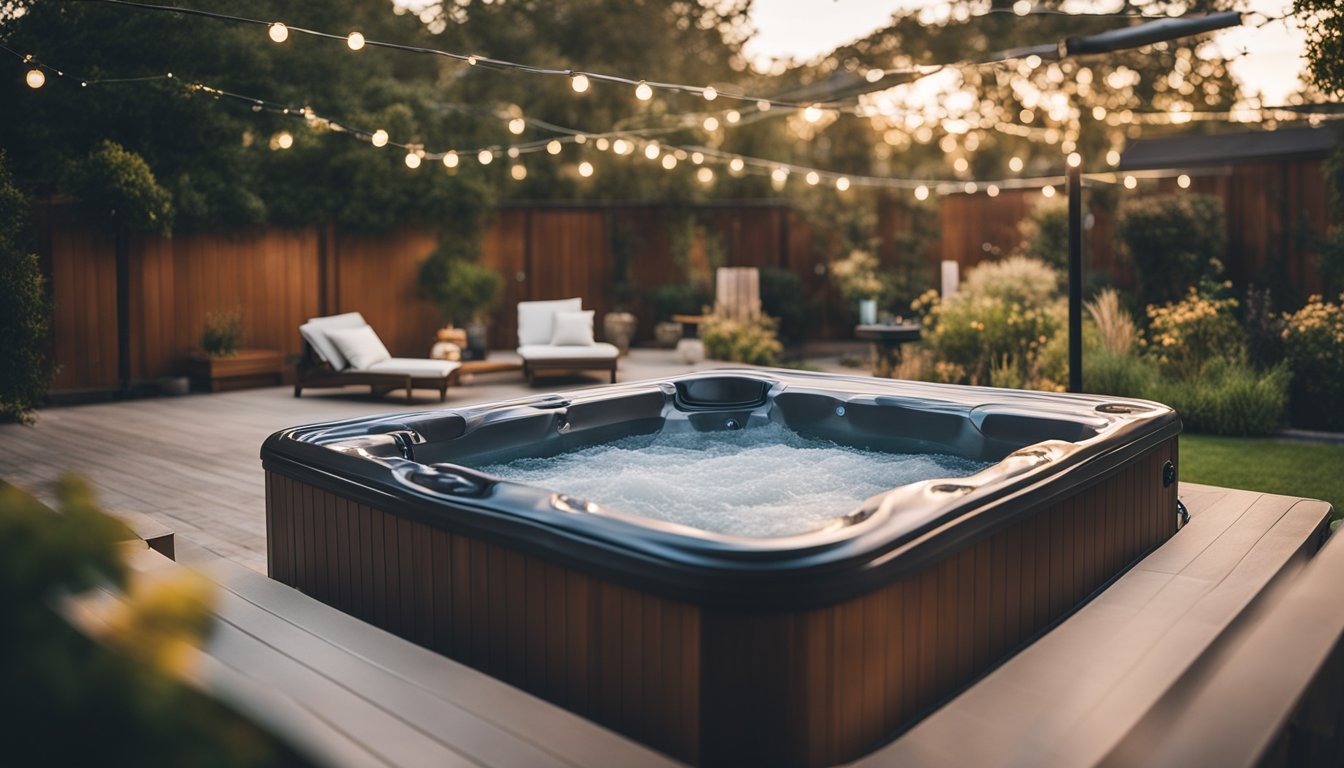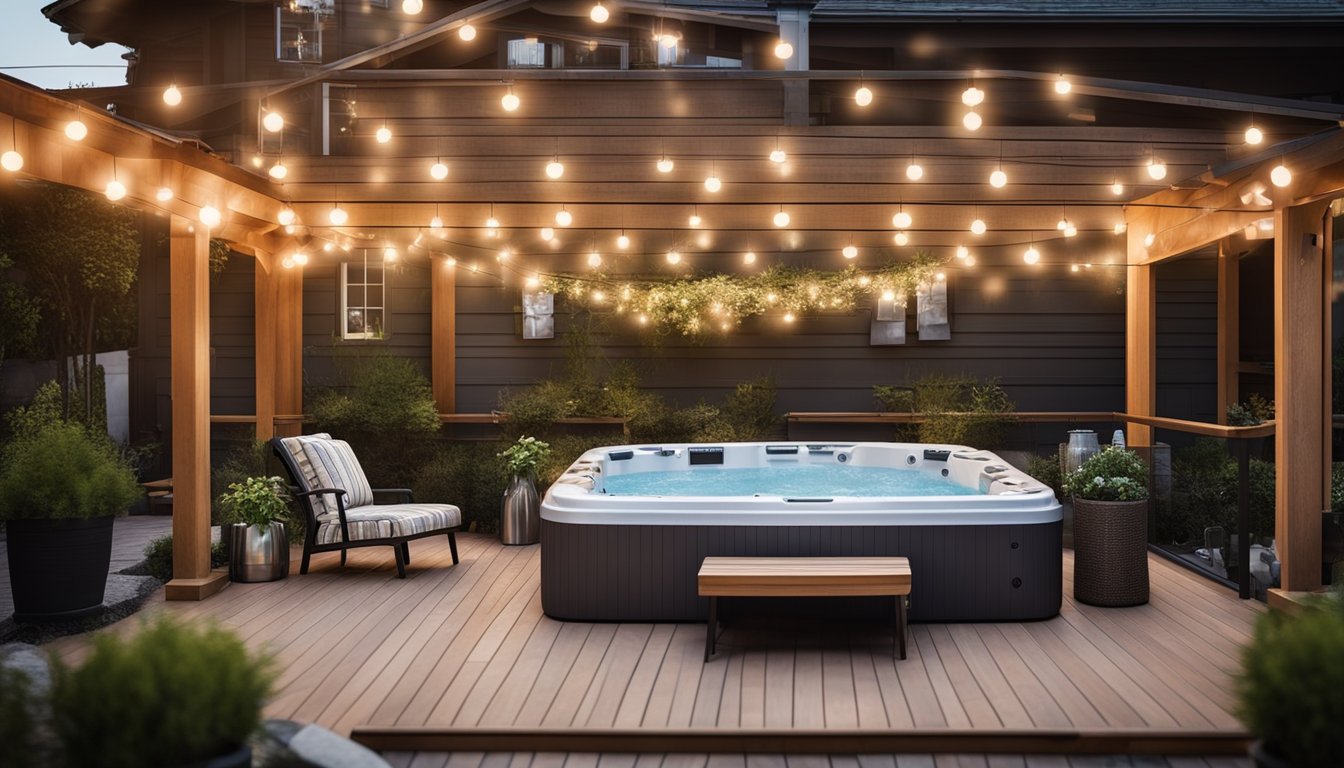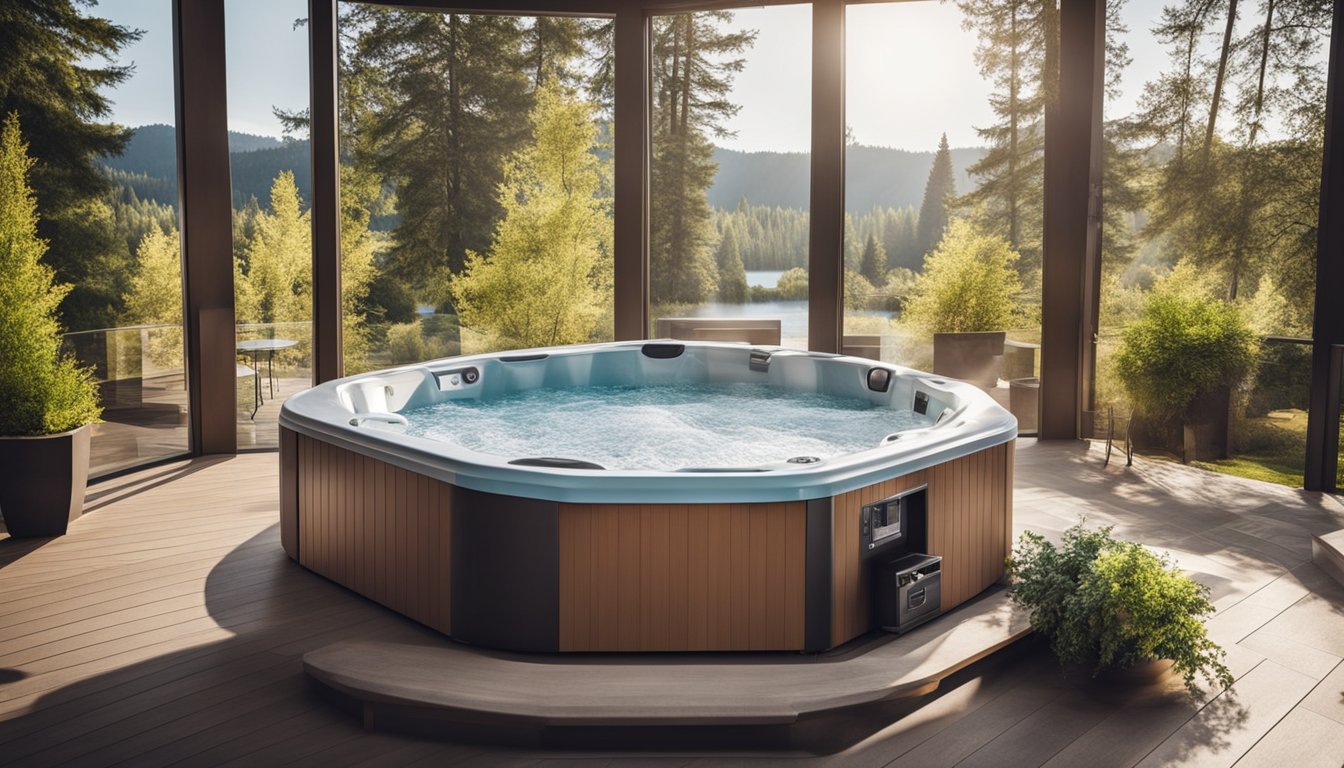Late updated: 08 Jul 2024 11:07
Written by: James Whitaker
Top Tips For Boosting Hot Tub Energy Efficiency: Practical Advice for Savings
Enhancing the energy efficiency of your hot tub not only lowers your energy bills but also reduces your carbon footprint, making it an eco-friendly choice. Using a thermal blanket on your hot tub water surface can significantly cut down on heat loss through evaporation, keeping your system from working overtime to maintain the temperature. Simple adjustments and modifications can go a long way in making your hot tub more sustainable and cost-effective.

Modern hot tubs come with various energy-efficient features, but even older models can benefit from some enhancements. High-density foam insulation is a great example; it helps retain heat within the tub, reducing energy consumption. Investing in energy-efficient pump and blower motors is another smart move that improves your hot tub's overall performance while saving electricity.
In addition to equipment upgrades, practical habits can contribute to energy efficiency. Regularly inspecting and maintaining your hot tub ensures it operates at peak efficiency. Energy-efficient hot tub practices can provide consistent benefits, making every soak both relaxing and responsible.
Key Takeaways
- Use a thermal blanket to minimise heat loss
- High-density insulation and efficient pumps save energy
- Regular maintenance maintains peak efficiency
Energy-Efficient Practices for Hot Tub Owners
Reducing energy consumption in hot tubs involves optimising temperature settings, regular maintenance, and using quality insulation. Let's explore key strategies in detail to help lower your energy bill.
Optimising Temperature Settings
Maintaining an optimal water temperature can significantly impact energy efficiency. We advise setting the water temperature to between 37-39°C (98-102°F). Avoid letting temperatures exceed 40°C (104°F) as higher temperatures require more electricity to maintain.
Consider using a programmable thermostat. It allows for precise control over temperature settings, ensuring the hot tub only heats when necessary. During periods of infrequent use, lower the temperature slightly to save on energy consumption.
Turning off the heater when the hot tub is not in use for extended periods can also reduce the energy bill. These small adjustments make a noticeable difference in overall energy savings.
Regular Maintenance Routines
Regular maintenance is crucial for energy-efficient hot tub operation. Clean or replace filters every month to ensure smooth water flow and proper system functioning. Dirty filters force the pump to work harder, increasing energy usage.
Maintaining proper chemical balance in the water protects the equipment and reduces energy consumption. Adjust pH, alkalinity, and chlorine levels regularly. Poor water quality can cause scale build-up, which strains the heating system.
Check for leaks and ensure that all components, such as pumps and jets, are in good working order. Regular maintenance reduces the risk of energy wastage and keeps the hot tub running efficiently.
Using Quality Insulation Solutions
Insulation plays a crucial role in retaining heat and reducing energy consumption. Invest in a high-quality, custom-fitted thermal cover with a high R-value. Thermal covers reduce heat loss by trapping warmth inside the hot tub, reducing the workload on the heater.
Adding extra insulation around the hot tub shell or cabinet can further improve energy efficiency. Consider using foam insulation or insulated panels. These materials help maintain consistent water temperature and reduce electricity usage.
Floating thermal blankets are another excellent solution. They float on the water surface, significantly minimising evaporation and heat loss. This simple addition can lead to noticeable energy savings.
By applying these practices, we can enjoy our hot tubs while keeping energy costs under control and ensuring efficient operation.
Equipment and Accessories for Efficiency

Maximising the energy efficiency of a hot tub involves using the right equipment and accessories. These investments not only reduce energy consumption but also enhance affordability and performance.
Investing in a High-Quality Hot Tub Cover
A high-quality hot tub cover is crucial for preventing heat loss. Insulated covers retain heat, making it easier for your system to maintain the desired temperature. This reduces the energy required for heating.
Additionally, consider adding a floating foam blanket beneath the main cover. This extra layer further minimises heat loss and evaporation. When choosing a cover, look for thick, dense materials with a good seal to trap heat effectively.
Choosing the Right Pump and Jets
Energy-efficient pumps and jets are essential for optimal performance without excessive energy usage. Look for Energy Star-rated pumps, which are designed to consume less power while maintaining strong water flow.
Variable-speed pumps offer flexibility by allowing us to adjust the flow rate according to our needs. When selecting jets, opt for those that can be shut off when not in use, reducing the load on the pump and saving energy.
Exploring Alternative Heating Systems
Alternative heating systems, like heat pumps, can offer significant energy savings. Heat pumps transfer heat from the air or ground to the water, operating more efficiently than traditional electric heaters.
Solar water heaters are another sustainable option. They harness solar energy to heat the hot tub, reducing reliance on electrical power. Both of these systems might involve an initial investment but can lead to long-term savings and reduced environmental impact.
Engaging with these equipment choices and accessories ensures our hot tub remains energy efficient and cost-effective while maintaining high performance.
Frequently Asked Questions

Let's dive into how best we can improve hot tub energy efficiency with straightforward answers to commonly asked questions.
What are the most effective methods to enhance the energy efficiency of a hot tub during winter months?
During winter, using a thermal blanket can significantly enhance insulation. A high-quality cover is also essential to minimise heat loss. Ensuring that the area around the hot tub is windproof can help retain warmth.
Can a hot tub be heated economically, and if so, how?
Yes, a hot tub can be heated economically. Utilising a timer for off-peak electricity rates can reduce costs. Additionally, setting the hot tub to a maintenance mode when not in use ensures it doesn’t unnecessarily consume energy.
At what temperature should a hot tub be maintained overnight to optimise energy conservation?
It’s most efficient to keep the hot tub set between 37°C to 38°C overnight. This range balances comfort with energy conservation, preventing the heater from working excessively.
What type of cover provides the best insulation and energy efficiency for hot tubs?
A cover with high-density foam and a tight seal offers the best insulation. These covers reduce heat loss and evaporation, significantly conserving energy. An additional floating thermal blanket can provide an extra layer of insulation.
What practices contribute to a hot tub's energy efficiency?
Regular maintenance, including cleaning filters, ensures the system runs smoothly. Minimising the temperature when not in use and using energy-efficient pumps and motors can also contribute significantly to efficiency.
Is maintaining a constant temperature in a hot tub more cost-effective than frequent heating and cooling?
Maintaining a constant temperature is generally more cost-effective. Frequently heating and cooling the water demands more energy, as the heater works harder to bring the water back to the desired temperature, leading to higher energy use.
